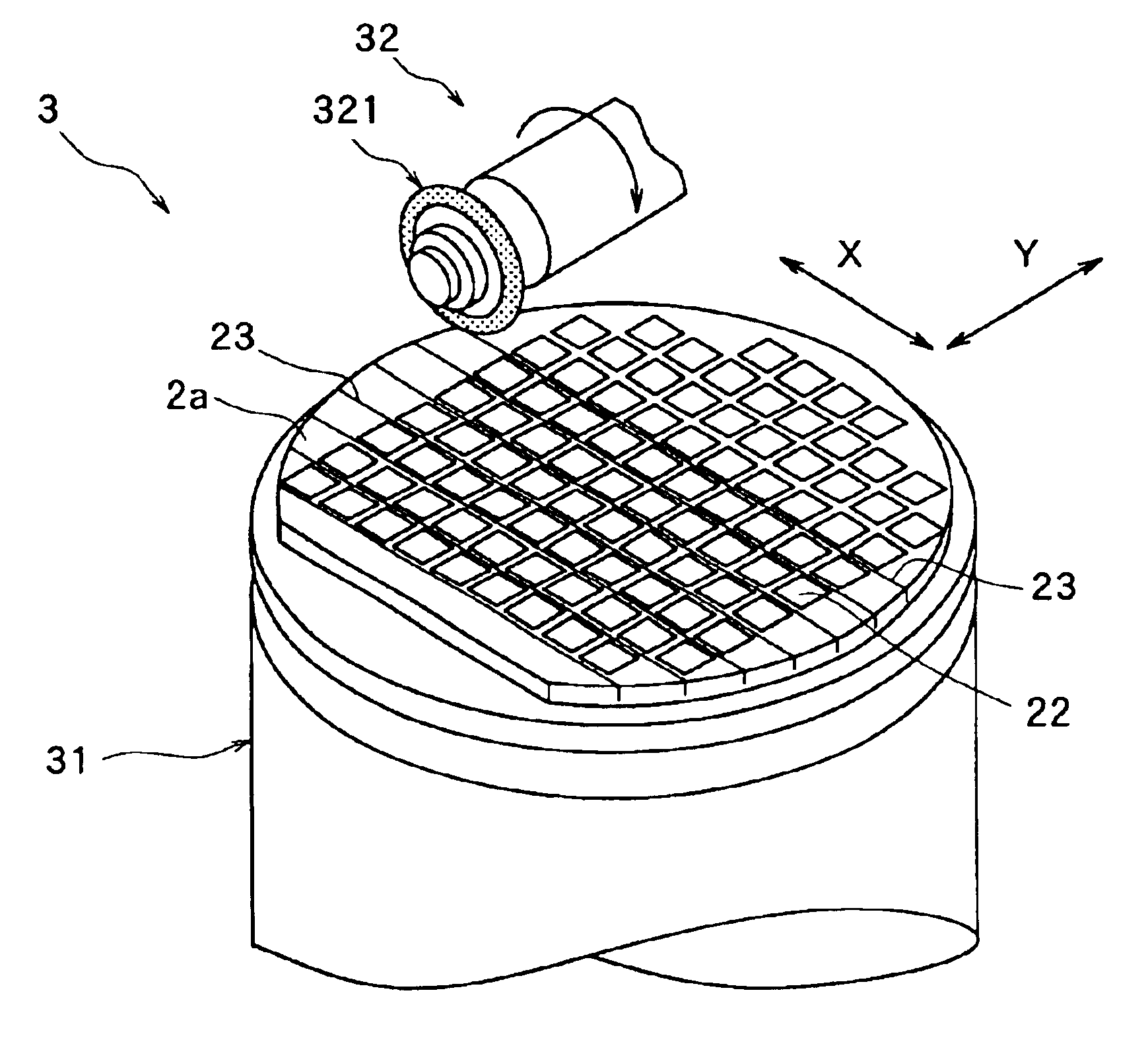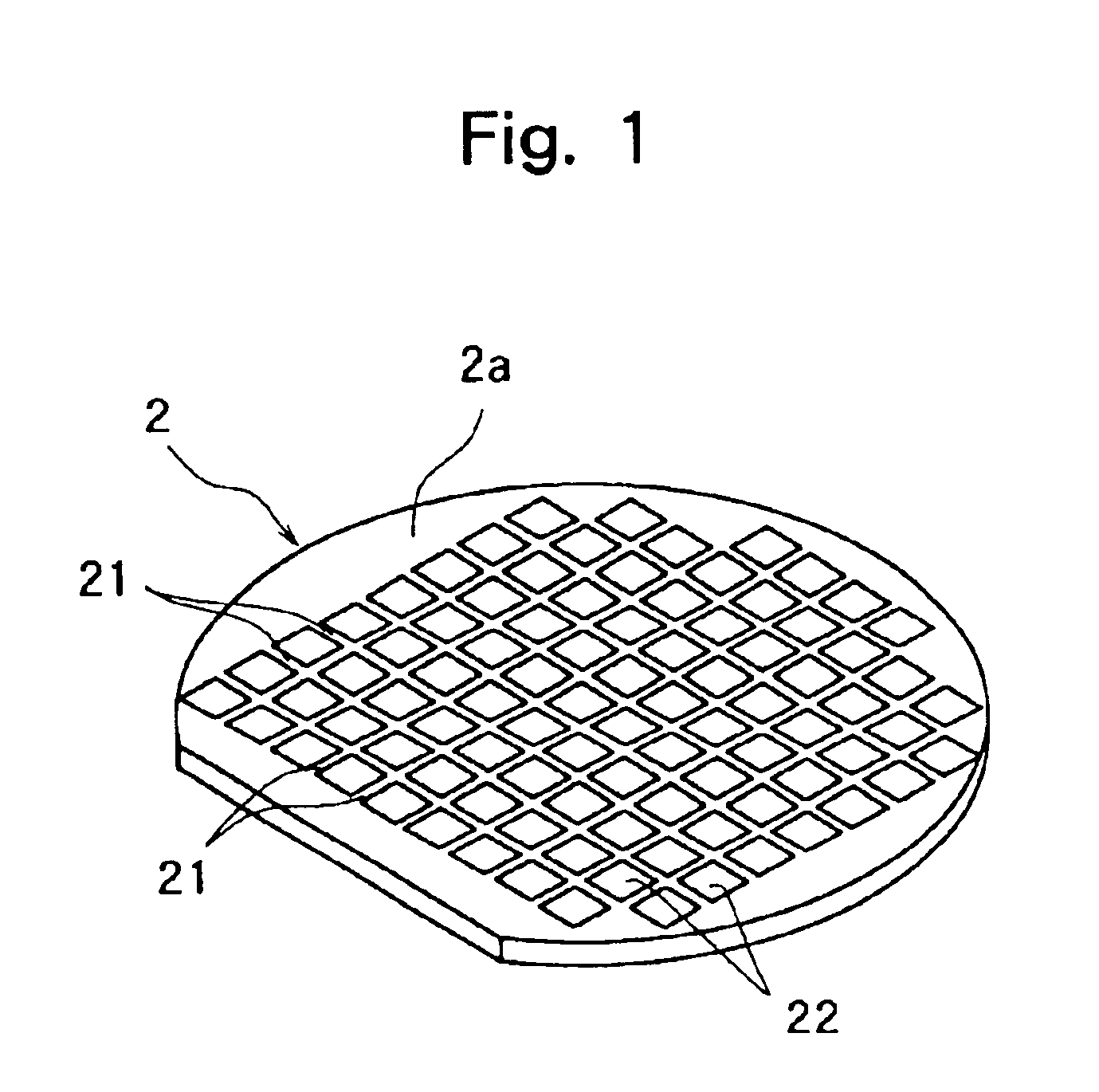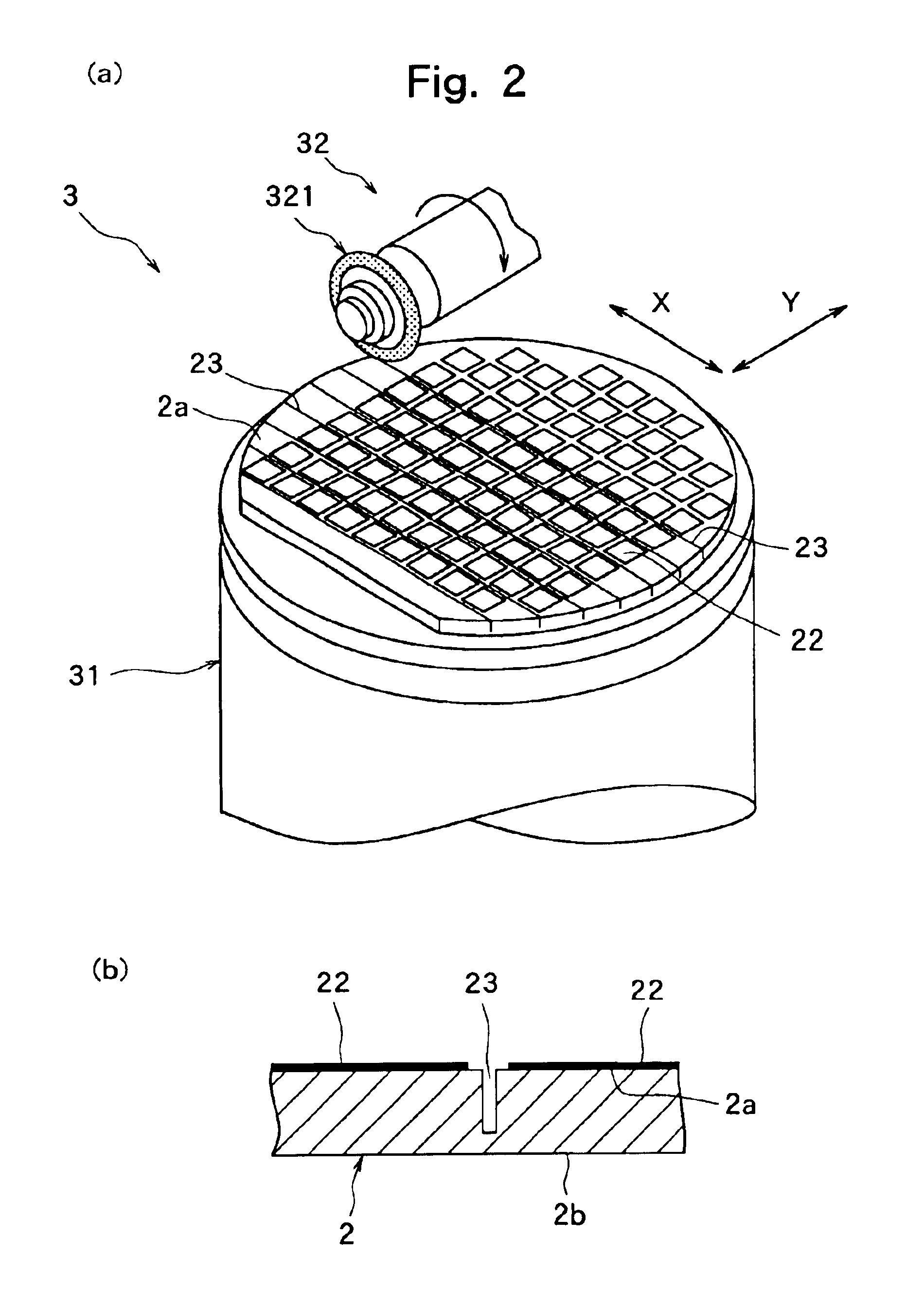Process for manufacturing a semiconductor chip
a manufacturing process and semiconductor technology, applied in the direction of manufacturing tools, laminated machines, solid-state devices, etc., can solve the problems of not being able to carry out the bonding work smoothly, the adhesive film cannot be affixed to the back surface of the semiconductor wafer beforehand, and the adhesive film cannot be cu
- Summary
- Abstract
- Description
- Claims
- Application Information
AI Technical Summary
Benefits of technology
Problems solved by technology
Method used
Image
Examples
Embodiment Construction
[0034]A preferred embodiment of the semiconductor chip manufacturing process according to the present invention will be described in detail hereinbelow with reference to the accompanying drawings.
[0035]FIG. 1 is a perspective view of a semiconductor wafer to be divided according to the present invention. The semiconductor wafer 2 shown in FIG. 1 has a plurality of streets 21 formed in a lattice-like form on the front surface 2a and circuits 22 formed in a plurality of areas sectioned by the plurality of streets 21. The process for manufacturing semiconductor chips by dividing this semiconductor wafer 2 into individual semiconductor chips will be described with reference to FIGS. 2 to 10.
[0036]To divide the semiconductor wafer 2 into individual semiconductor chips, dividing grooves having a predetermined depth (corresponding to the final thickness of each semiconductor chip) are first formed along the streets 21 formed on the front surface 2a of the semiconductor wafer 2 (dividing gr...
PUM
| Property | Measurement | Unit |
|---|---|---|
| thickness | aaaaa | aaaaa |
| thickness | aaaaa | aaaaa |
| thickness | aaaaa | aaaaa |
Abstract
Description
Claims
Application Information
 Login to View More
Login to View More - R&D
- Intellectual Property
- Life Sciences
- Materials
- Tech Scout
- Unparalleled Data Quality
- Higher Quality Content
- 60% Fewer Hallucinations
Browse by: Latest US Patents, China's latest patents, Technical Efficacy Thesaurus, Application Domain, Technology Topic, Popular Technical Reports.
© 2025 PatSnap. All rights reserved.Legal|Privacy policy|Modern Slavery Act Transparency Statement|Sitemap|About US| Contact US: help@patsnap.com



